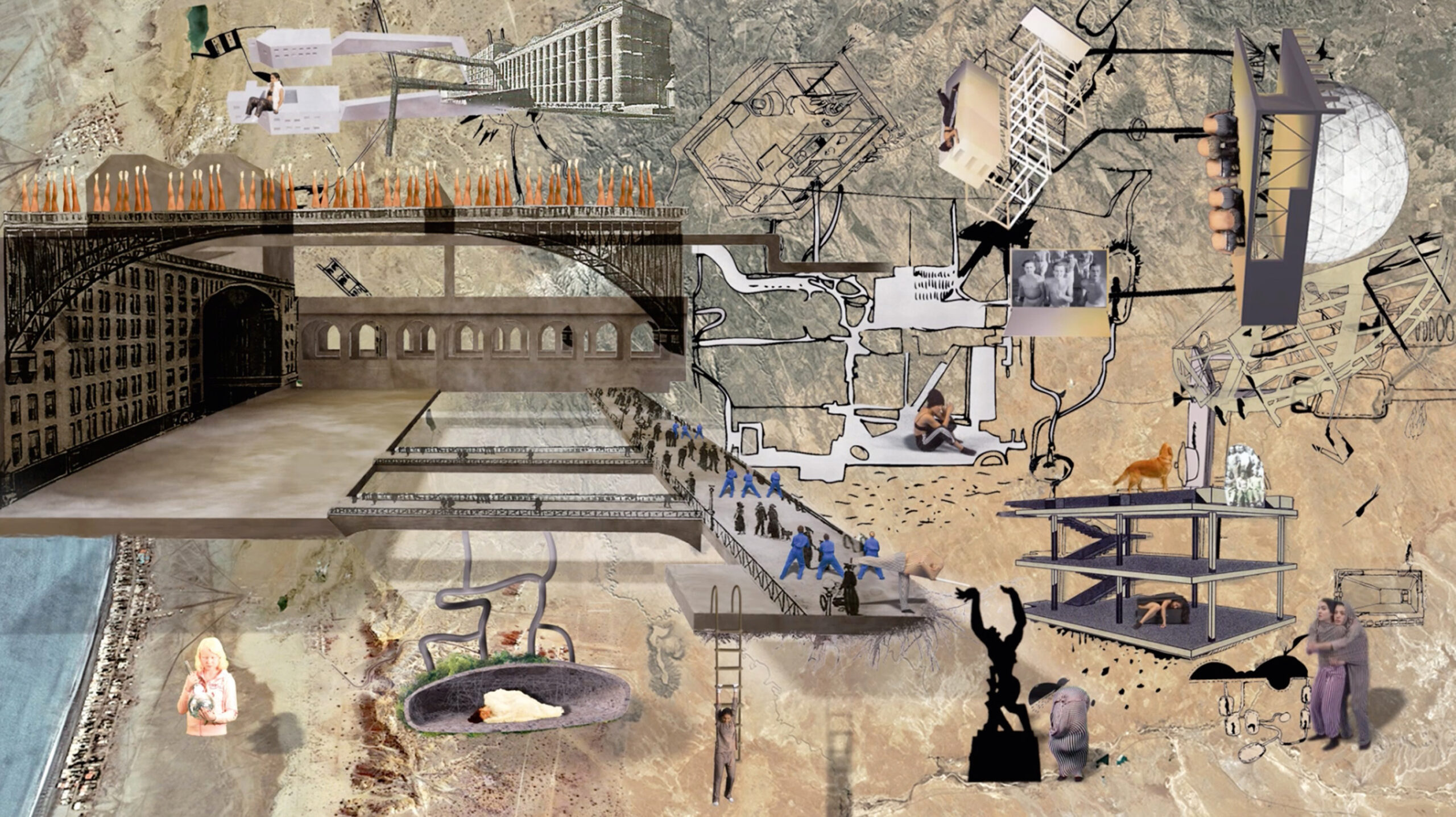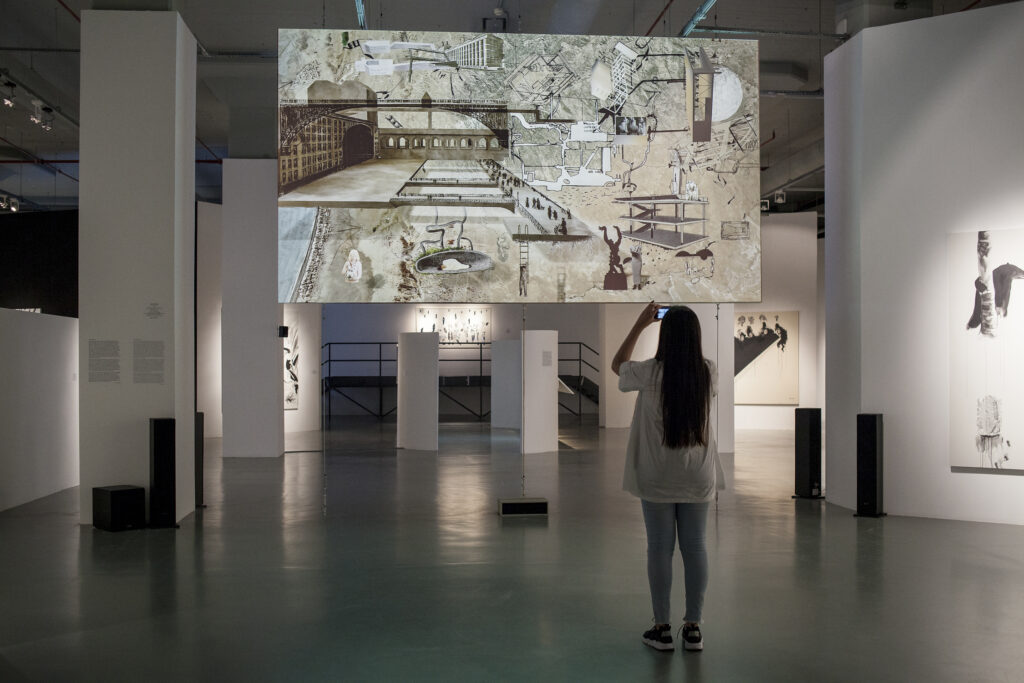
“National Fitness” was shaped during a period when I was curious about and started to question how we perceived ourselves as a national union and what kind of image we transformed this into. I thought it was in architecture that I could most clearly see the impact of modernism on national identity. After all, modern architecture thinks of the world as a holistic, universal and rational structure and establishes itself as a universal and permanent suggestion that transcends cultural differences. This situation made it possible for me to develop a specific design strategy with which to struggle with this conception. I began by using tracing paper to copy futuristic, innovative historical buildings that reflected the European identity and that I had chosen from the history of modernism. In order to render this copying process unsuccessful, I stopped at a point and continued with my gestural drawings. I wanted to bring out the uncanniness and to disappoint the progressive. While this drawing process created a plane for video, the satellite imagery in the background and the space created by the planes of the 3D work of certain iconic buildings provided me with a different playing field and scene. One of the scenes that I placed in the cracks that this place brought about was the May 19 pageants from my own memory. These pageants, during which we wore uniforms with shorts or miniskirts that reflected the official ideology, ended with our being watched hungrily by crowds of men who made provocative comments. I was caught between severe shame and my duty as a patriotic girl.
That is, when I wavered between this sense of shame and the freeing power of art, we can see clues as to how the body was depicted as a national image in the painting and sculpture of the Republican period. It has never ceased to be interesting for me to research the odd images of woman that are formed by the conjunction of local motifs and the trends in modern European painting that result from an interest in art as a requirement of modernization. I wanted to transform these images of women who were adopted by the official ideology, invite them onto the stage and give them an active role. The women begin to move on their own, independent of me, and like children disrupt the established patterns of meaning. For instance when the statue that Zadkin dedicated to freedom encounters a body that has not yet been born and engages it in conversation, Zadkin ends up dividing himself in two. Another reference in this work is to Metropolis and the workers who escape from the movie continue to cause disruption by spreading through the video’s spooky spaces. The bi-polar black-and-white world of this film gave me inspiration as to how bodies are shaped by discourses.
When bodies shaped by sports fling themselves into the void to free themselves, a wig of unknown origins occasionally divides the stage like a whip. To one side, an albino girl is trying to read her destiny in a disco ball with a flashlight… She interrupts with the phrase, “We laughed, we cried.”… In another corner Le Corbusier’s “Maison Dom-ino” folds into itself and collapses while an Istanbul street dog becomes homeless… “Maison Dom-ino” was also obliged to entertain an unexpected guest: a woman. This woman might be a migrant who travels in her suitcase. In the lower right corner two strange-looking women intertwine with each other as segments from other videos try to give meaning to what is going on… The legs that emerge from the building disappear before transforming into the image they appropriated with their white socks and repeat themselves by turning ceaselessly to demonstrate the new ideal bodies of contemporary ideologies.
İnci Eviner
İnci Eviner Retrospective: Who’s Inside You?, Istanbul Modern, Istanbul, 2016

Installation view from İnci Eviner Retrospective “Who’s Inside You?”, Istanbul Modern, Istanbul 2016